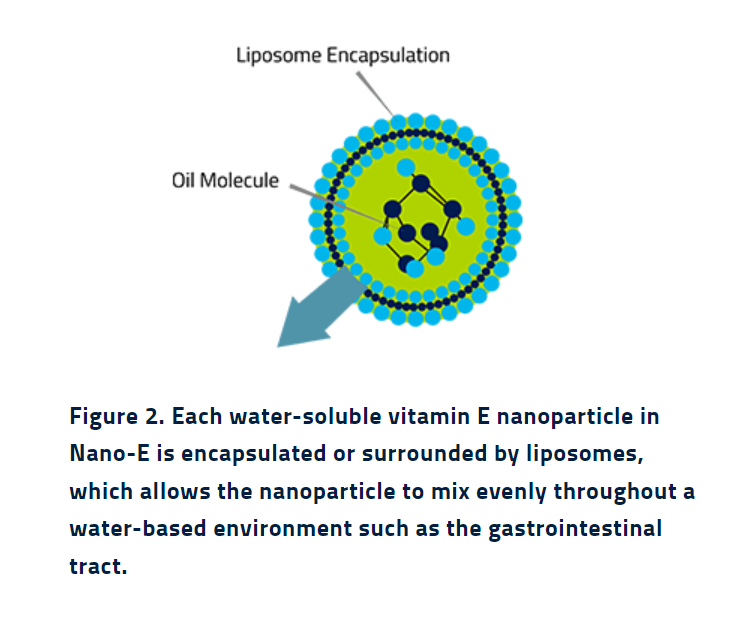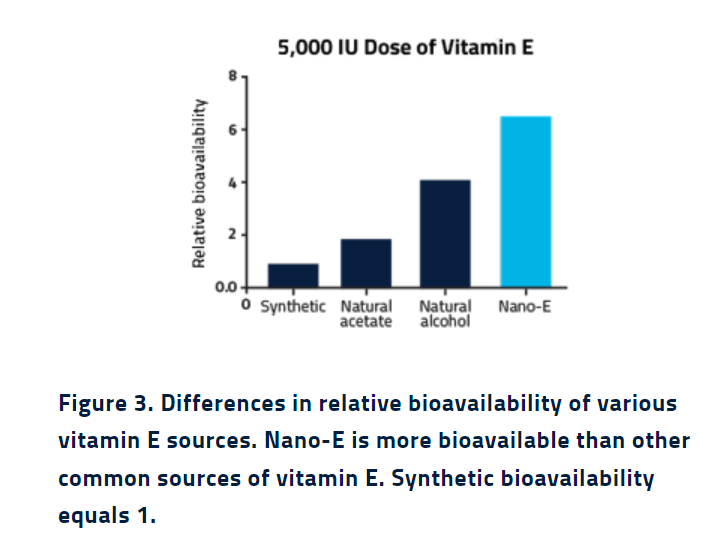Knowde Enhanced TDS
Identification & Functionality
- Ingredient Name
- Ingredient Origin
- Animal Feed & Nutrition Functions
- Ingredients
- Vitamin E
- Technologies
- Product Families
- Guaranteed Analysis
250 IU d-alpha-tocopherol per mL
Features & Benefits
- Labeling Claims
- Animal Feed & Nutrition Features
- Highlights
Vitamin E is first and foremost an antioxidant, an agent that keeps free radicals from forming and potentially weakening cells and tissues. In addition to its antioxidant responsibilities, vitamin E is vital to immune, cardiovascular, circulatory, neuromuscular, and reproductive functions.
The availability and necessity of vitamin E in equine diets is well established. When healthy horses are given frequent access to fresh green forage such as good-quality pasture, there is little need for supplementation of vitamin E. However, many horses today are managed without fresh forage in their diets. These horses can survive in such management systems, but they will likely not be consuming sufficient vitamin E for optimal health.
- Research Confirms Efficacy
Research has revealed that vitamin E varies in its potency, based on whether it is natural or synthetic. The chemical structures of synthetic and natural vitamin E differ. Controlled studies at Kentucky Equine Research indicate that Nano-E is superior to synthetic and other natural vitamin E sources.

Alpha-tocopherol is the form of vitamin E that is most abundant in the body, and is therefore the most appropriate for use in supplementation.
To make alpha-tocopherol stable for use in most supplements, it must be chemically joined with an acid during manufacture, a process called esterification. The acid, in this case acetate, acts as a padlock or protective cap that shields alpha-tocopherol from the damages caused by exposure to oxidative forces. Without esterification, alpha-tocopherol can quickly denature, losing its antioxidant properties and rendering it ineffective.
Once ingested, esterified alpha-tocopherol is subjected to normal digestive enzymes. A certain group of enzymes called esterases are chemically capable of unlocking the padlock created through esterification. Once free, alpha-tocopherol is available for absorption with its antioxidant properties intact.


Fat-soluble vitamins like vitamin E must be offered to horses in a way that maximizes absorption. Because it is not mixed with other ingredients, the vitamin E in Nano-E does not need to be protected by esterification, but it must become water-soluble or dispersible in liquid. This presents a challenge: As everyone knows, oil and water don’t mix.
Researchers developed a method by which fat-soluble vitamins can be absorbed with great efficiency. Because of its oily nature, vitamin E is hydrophobic (water-shunning). To overcome this, researchers use proprietary technology to encapsulate the vitamin E in nanoparticles and then surround each nanoparticle with a hydrophilic (water-loving) outer layer. The hydrophilic outer layer, as illustrated in Figure 2, allows the nanoparticles to be rapidly and evenly released in water-based environments such as the gastrointestinal tract. The differences in bioavailability among vitamin E sources are shown in Figure 3.
The greatest benefit of this unique delivery system is an increase in the bioavailability of vitamin E. The more vitamin E that is absorbed into the bloodstream, the more available it is for use as a body-wide antioxidant essential for tissue repair and for its imperative roles in various body systems.
Applications & Uses
- Markets
- Animal Species
- Why to use Nano-E for my horse
- Vitamin E antioxidant supplement for all types of horses
- Natural-source vitamin E proven more effective than synthetic vitamin E
- Rapidly available so administration may be timed to provide peak antioxidant protection
- Reproductive benefits for breeding stallions, and pregnant and lactating broodmares
- Nano-E is recommended for
- Race and performance horses in intense work
- Horses recovering from illness or injury
- Prior to or following stressful events such as weaning or travel
- Horses with neurological or neuromuscular disease
- Horses in confinement or those not receiving fresh green grass
- Feeding Directions
- Daily Use: give 4-8 mL (1000-2000 IU) per 1100 lb (500 kg) horse by mouth or top-dress on feed.
- Pre-Competition: give 12-20 mL (3000-5000 IU) per 1100 lb (500 kg) horse 6-12 hours prior to competition or stressful event.
In racehorses, we recommend stopping this product 24 hours prior to racing.
Why?
Regulations for specific substances vary by racing jurisdiction. We recommend that all supplements be discontinued at least 24 hours prior to racing and that horse trainers and managers check with their specific jurisdiction prior to using any feed additives or supplements in the lead-up to racing.

